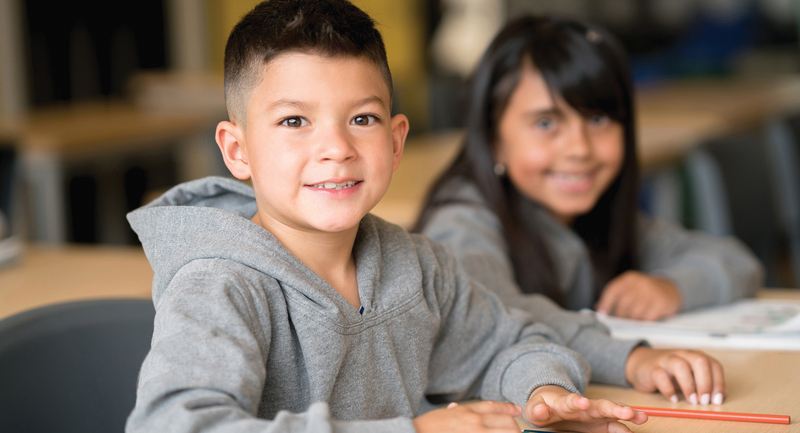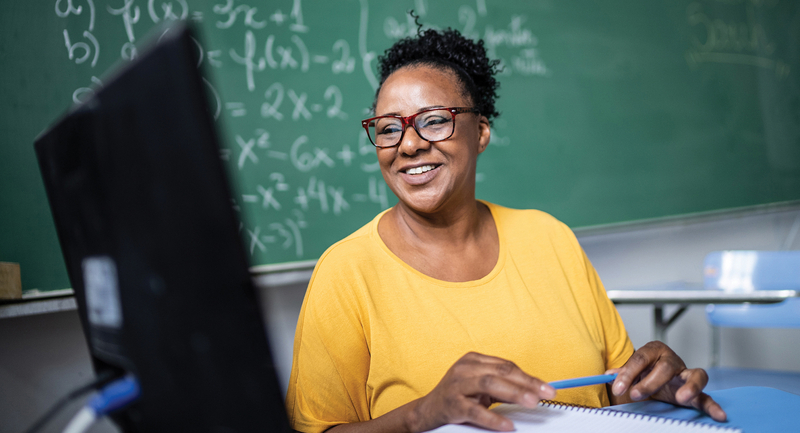Treasure Hunting for Truth
I tell my middle school students that it’s like we’re going on a treasure hunt where treasure is the truth. Critical thinking skills are their treasure map, and their compass is a dose of healthy skepticism.
To get to the treasure, they can approach each piece of news and information (or misinformation) with a list of questions: “What story is being told here? And why this particular angle?” “Who wrote this, and what are their credentials?” I share the example of a fictional Uncle Charlie, describing that he may be an expert fisherman, but he knows nothing about physics. If the story is about physics, we want to go beyond what Uncle Charlie has to say even though we may completely adore Uncle Charlie.
I encourage them to think like a self-reflective, objective Enola Holmes, considering perspectives that might be missing, as well as their own hidden biases. “What’s not being said? Whose voice could add to this conversation?” “How do I become more aware of my own blind spots?”
And I share about digital tools, tips, and strategies like the Wayback Machine and reverse image searching to check the reliability of sources. News Literacy Project’s Checkology curriculum has an excellent “Understanding Bias” lesson and related infographic that I use regularly. ADL also has excellent resources, along with Facing History and Ourselves.
—Cathy Collins, library media specialist, Sharon Schools, Sharon, Massachusetts
Progress Over Perfection
As an ESL teacher, I often observed a self-imposed bias among my students: They believed they had to speak in “perfect English.” This perfectionism led many to remain silent, hindering their learning.
I introduced Language Stepping Stones, where students anonymously shared communication challenges. Their comments revealed beliefs like: “I can’t share ideas if my English isn’t perfect,” “People won’t understand me if I make mistakes,” and “Staying quiet is better than using wrong sentences.”
We discussed how their fears stemmed from perfectionism rather than reality, and I implemented three key strategies: First, we posted a Judgment-Free Zone sign, assuring that no one would be judged by their language ability. Second, I celebrated verbal participation regardless of accuracy by acknowledging it during class and noting it to students afterward. Third, I had students write communication concerns in dialogue journals, responding weekly. We also shared common concerns regularly in class.
Addressing biases requires consistent reinforcement and open dialogue—not through a single intervention, but by creating a sustained culture of acceptance and growth.
—Soyoung Lee, associate professor, Konkuk University, Seoul, Korea
Visibility as a Lesson
Throughout my career as a principal and school head, I found that one of the most powerful ways to help students address biases was through authentic visibility. As an openly lesbian mom with a partner, I made the conscious choice to be transparent about my family structure in professional settings.
This visibility serves multiple purposes. For LGBTQIA+ students, seeing a school leader who shares aspects of their identity provides validation and safety. For all students, it normalizes the reality that healthy, loving families come in diverse configurations. When I participated in our high school’s GSA/LGBTQIA+ Club as either an advisor or participant, I was modeling that these spaces matter.
In today’s polarized climate, this approach may seem contentious, but I’ve witnessed its impact. Students learn to question assumptions about “normal” families when they see leadership that reflects diversity. The simple act of being openly and proudly who I am encourages students to examine their preconceptions and creates space for conversations about other biases they may hold.
Sometimes addressing bias doesn’t require elaborate curriculum—it requires adults willing to be authentically themselves.
—Kara Stern, director, education and engagement, SchoolStatus, New York City, New York
Identity, Bias, and Belonging
Growing up as an Afro-Latina, born in Panama and raised in Brooklyn, I often found myself caught between two worlds. I struggled with whether I was “Black enough” or “Hispanic enough” to fit into the stereotypes created by others within my community. This personal journey has deeply influenced my approach to helping students in underserved Black and Latino communities recognize and address biases.
When I was teaching, I began by sharing my own story. I taught over-aged, under-credited students of color, ages 16–21 in high school, who already carried the weight and doubt of the world on their shoulders, and it was crucial to have honest discussions about the confusion and frustration we all felt navigating identity amidst societal stereotypes.
Understanding the roots of biases is crucial for maintaining student engagement. Role-playing and simulations are also effective tools. By putting themselves in others’ shoes, students can better understand different perspectives and develop empathy. They enjoy bringing history to life and answering questions that prompt them to think about their ancestors and what they might have experienced during different historical periods.
Whether it’s leading a debate or participating in a global cultural exchange, these experiences empower students to make a difference in their communities. This holistic approach empowers them to become empathetic, informed, and active members of their communities, who will someday stand up and speak out against all forms of oppression and injustices they currently witness in the world.
—Yaritza Villalba, CEO and founder, McKenzie’s Adventures, Coram, New York
The Past Can Shape the Future
I teach “Literature and the Holocaust,” and I see students significantly grow through the reading and discussion. Many of my students have little experience with diverse cultures, and this course allows them to analyze their place in a very diverse world. Reading and listening to survivor testimony is a fantastic way for them to recognize their own unique view of the world, and the writing and discussion of such a horrific event allows them to grow into being able to talk about difficult topics in a mature and informed manner.
—Rachel Haas, English instructor, Findlay City Schools, Findlay, Ohio
Breaking Down Barriers
In my virtual classroom at a therapeutic alternative day school, I teach Black girls who struggle with internalized biases about their capabilities. Many believe that showing intelligence makes them vulnerable and that they must always appear tough: These beliefs create barriers to academic engagement and personal growth.
Through encouragement, culturally responsive discussions, and restorative practices, I help them recognize their strengths beyond the hard exterior. We explore narratives of powerful Black women who lead with intellect and resilience, challenge negative self-perceptions, and practice alternative conflict resolution. Over time, girls who once hesitated to engage now embrace their intelligence.
Recently, a student erupted in frustration over unrequited feelings for a boy—a moment that reinforced the importance of teaching self-worth and emotional regulation. The next day, as she reflected, I reminded her that this kind of frustrated reaction belonged to her old self, and she agreed, expressing pride in her growth.
—Tamar Brown, virtual instructor, Therapeutic Day School, Chicago, Illinois









